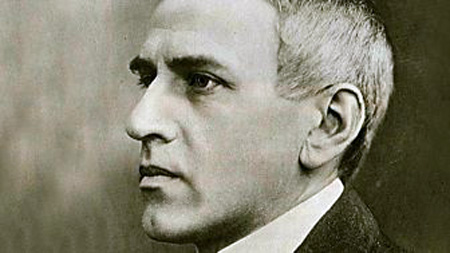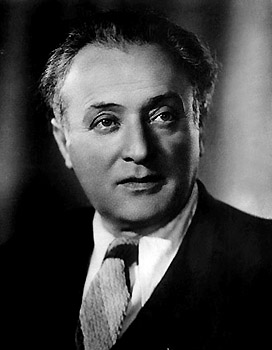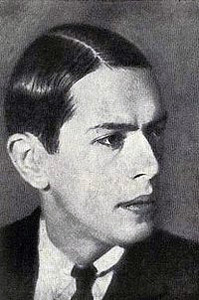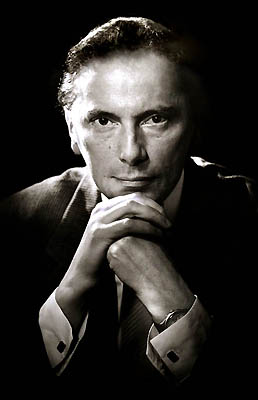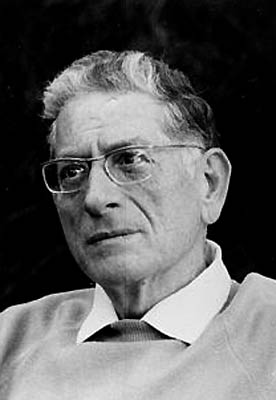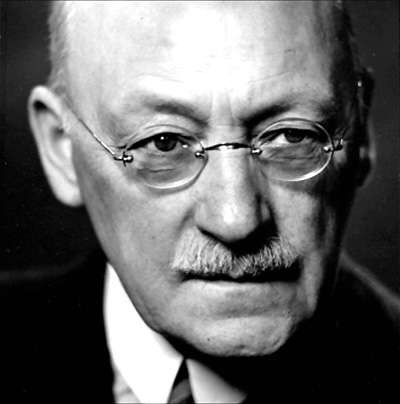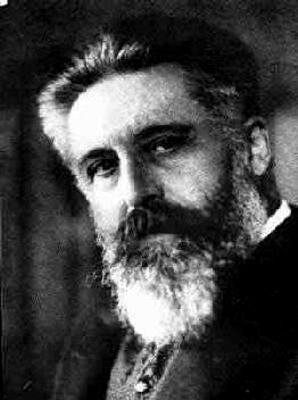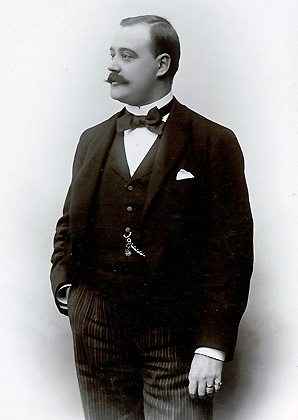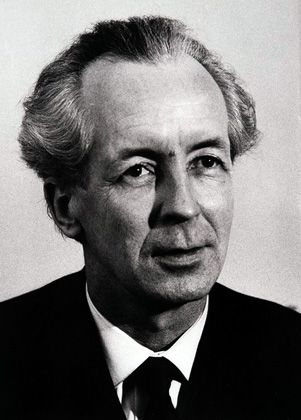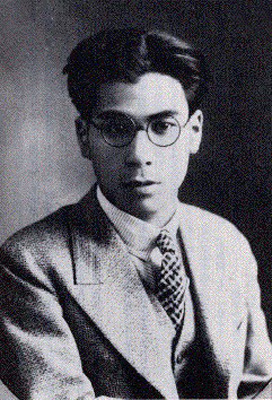No.1396
Modern: Tonal
Completed in 1941, Coro di morti (Chorus of the Dead) stands with Noche oscura - a St. John of the Cross setting written
ten years later�as perhaps Goffredo Petrassi�s (1904-2003) finest achievement in the field of vocal music, which is to say,
as one of the high points of Italian musical creation in the last century. Stravinsky and Hindemith are two names that have often
been cited in discussions of Petrassi�s style and its origins. Stravinsky�s influence can indeed be heard in Petrassi�s crisp instrumental
sonorities - Coro di morti, a case especially in point, is scored for male voices with three pianos, brass, timpani, percussion,
and contrabasses, without woodwinds or upper strings�and Hindemith�s in his empirical yet rational harmonic language. The piece
explores death from the bleak viewpoint of the dead themselves. The 32 lines of text - heptasyllables interspersed with more
characteristically Italian hendecasyllables�are divided into five main periods, which are prefaced, punctuated, and followed by
purely instrumental sections.
Gian Francesco Malipiero (1882-1973) was born in Venice in 1882, grew up in what we would call a dysfunctional family,
and received an uneven musical education. Early on, however, he became profoundly interested in the works of Monteverdi,
Frescobaldi, and other early Italian composers who, at that time, were largely ignored; they influenced him significantly, as
did Debussy, Stravinsky, and other major figures of his own day. Pause del Silenzio - literally, Silence�s Pauses - was
written during the First World War, and this and the other works he composed in those years �reflect my agitated state,�
he said. On the other hand, �If I have created something new in my art (form, style) it was precisely at that time.� It was
written just when WWII made it �most difficult to find silence. . . Precisely because of their tumultuous origins, they contain
no thematic development or other artifices." The commanding statement with which the piece begins is �the only thematic
link� among the sections.
Although he lived well into the twentieth century, Italian composer Ildebrando Pizzetti (1880-1968) created music which
was more in the spirit of the nineteenth century, and in many of his compositions he harkened back to even earlier times.
Perhaps the greatest influence on the development of Pizzetti�s mature musical language was his early exposure to the music
of the great Italian polyphonists of the fifteenth and sixteenth centuries. The genesis of Pizzetti�s Three Preludes to Sophocles'
Oedipus is somewhat complicated. Subsequent to receiving his diploma from the Conservatory in 1901, Pizzetti�s first orchestral
work was an Overture to l�Edipo a Colono which the composer dedicated to the stage and silent film actor Gustavo Salvini (1859-1930).
A few years later, Salvini asked Pizzetti to compose some music for a production of L�Edipo Re� at the Teatro Olimpia in Milan.
Later in his life, Pizzetti recast all of this material into a three-movement orchestral suite meant for the concert hall. While there
isn�t a detailed programmatic narrative to Pizzetti�s triptych of roughly equal-length preludes, the music suggests broad themes
related to Sophocles� famous tragedy of patricide, incest, and uncontrollable fate. The initial Largo establishes a tragic mood and
a sense of foreboding in music that is almost Italianate Bruckner.
Luigi Dallapiccola (1904-1975) can arguably be considered an honorary fourth member of the 12-tone Second Vienna
School of Schoenberg, Berg, and Webern, having produced some of the loveliest and most listenable 12-tone works ever
written. Dallapiccola puts as much imagination into atmosphere as into syntax; pieces like the Canti di prigionia remind
us that before he discovered Schoenberg he had been obsessed with Debussy. All three songs of the Canti di prigionia are
threaded through with the dies irae, the 13th-century �day of wrath� chant from the mass for the dead. One can hear in this
Dallapiccola�s enthusiasm for early Italian composers such as Monteverdi and Gesualdo, also evident in the smoothly contrapuntal
choral writing.
In between Canti di prigionia and Canti di liberazione of 1951-55, of course, came World War II, during part of
which Dallapiccola and his Jewish wife had to hide out near Florence. Having given voice to prisoners before the war, it is with
fitting symmetry that he celebrated their liberation afterward. By now, Dallapiccola had become more immersed in the 12-tone
language, and had come under the influence of the contrapuntal pointillism of Anton Webern. The first song is particularly
difficult in its fluid overlay of rhythms, and complex in its canonic devices and structural inversions. The song from Exodus,
depicting the drowning of Pharaoh�s chariots in the Red Sea, returns to a more antique polyphony, and the final hymn from
the Confessions of St. Augustine is more prayerful, though illuminated by orchestral fireworks.

Music by [see above]
Played by the American Symphony Orchestra
With The Concert Chorale of New York
Conducted by Leon Botstein
"Leon Botstein is an important American conductor and leading academic, particularly known for his innovative programs
and interest in contemporary and neglected repertory.
He obtained his bachelor's degree from the University of Chicago, and his master and Ph.D. from Harvard (the latter in
1985). He was a violin student of Roman Totenberg and studied conducting with James Yannatos, Richard Wernick, and
Harold Farberman.
He pursued dual careers in academics and music. He was a teaching fellow in general education at Harvard University from
1968 to 1969 and a lecturer in the Department of History of Boston University in 1969. Meanwhile, he began conducting
and from 1973 to 1975 he was the principal conductor of the White Mountain Music and Arts Festival.
In 1975, he became President of Bard College in New York and in 1979 president of Simon's Rock College of Bard. Bard
College is an innovative liberal arts college in Annandale, New York, founded in 1860, and Simon's Rock is the U.S.'s only
liberal arts and sciences college designed for students of high school age, who typically enter it after tenth or eleventh
grade and work directly for their bachelors' degrees.
Botstein founded the annual Bard Music Festival, which always focuses on the work of a single composer, invariably
presenting newly discovered or new editions of compositions by important composers, which have included Brahms,
Mendelssohn, Richard Strauss, Dvorak, Robert Schumann, Bart�k, Schoenberg, and Beethoven. The festival includes
academic studies and lectures on the composers and their music, and annually publishes with Princeton University Press
companion books of essays on the featured composers, as well as bringing highlights of the Festival to Alice Tully Hall
at Lincoln Center.
Botstein has conducted such major orchestras as the Philharmonia of London, the London Philharmonic, the Royal Scottish
National Orchestra, NDR Orchestra of Hannover, and others. In 1992, he was appointed Music Director and Principal
conductor of the American Symphony Orchestra, one of the U.S.'s most important orchestras associated primarily with
new and American music, and is principal guest conductor of the Hudson Valley Philharmonic and its chamber orchestra.
He also directs Bard's The Orchestra Now and is conductor laureate of the Jerusalem Symphony Orchestra.
Botstein is the recipient of many awards, honorary degrees, and fellowships, and is a member of various academic institutes
and research groups. He was a visiting faculty member in 1986 of the Manhattan School of Music and professor of the
Hochschule f�r angewandte Kunst in Vienna in 1988. He continues his efforts in musical education with the American
Symphony Orchestra by founding several outreach programs. In addition to conducting its regular concerts in the Lincoln
Center Great Performers series, he has founded Classics Declassified, an educational series for adult listeners. He has
toured with the ASO to Japan and Korea (1994) and in 1998 took it to Brazil to inaugurate a concert hall in S�o Paulo.
He has published several books and over 100 articles and reviews, and appeared on the Oprah Winfrey Show to discuss
his radical proposal to end high schools as they are now known in the United States. He is also editor of The Musical Quarterly.
Botstein has recorded on several labels. Koch Classics released his performances with the ASO of orchestral arrangements
of Franz Schubert's two-piano music. On CRI, he has recorded music of American composers Robert Starer, Richard Wilson,
Richard Wernick, and Meyer Kupferman. He recorded Mendelssohn's Paulus on Arabesque, the Schalk edition of Bruckner's
Fifth Symphony and Dohnanyi's D minor Symphony on Telarc and a series of Karl Amadeus Hartmann symphonies on the
same label, and a CD of the music of Austrian expatriate Ernst Toch on the New World Records label."



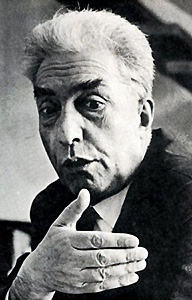
Left to right: Petrassi, Malipiero, Pizzetti, Dallapiccola.
Source: ASO Live CD (My rip)
Format: mp3(320), DDD Stereo
File Size: 217 MB (incl. cover)
Download Link (mp3) -
https://mega.nz/#!eqA10SbQ!pjL4xb4-3LpXS0MZGva9hEcsaHG0p5mdLeAhJL561VQ
/>
Enjoy! Don't share! Buy the original! Click on "Reputation" button if you downloaded this album! :)






